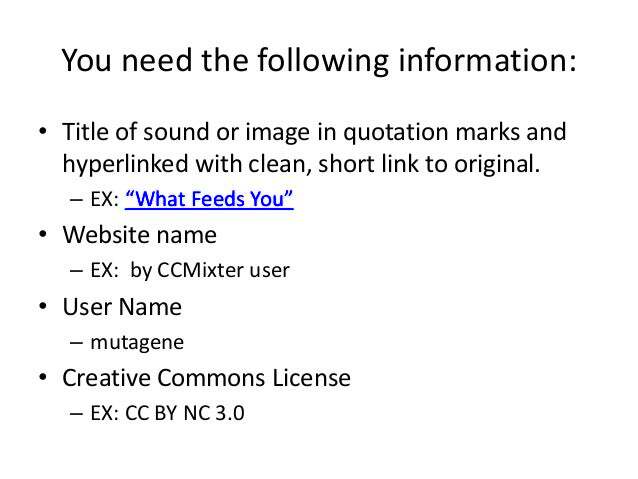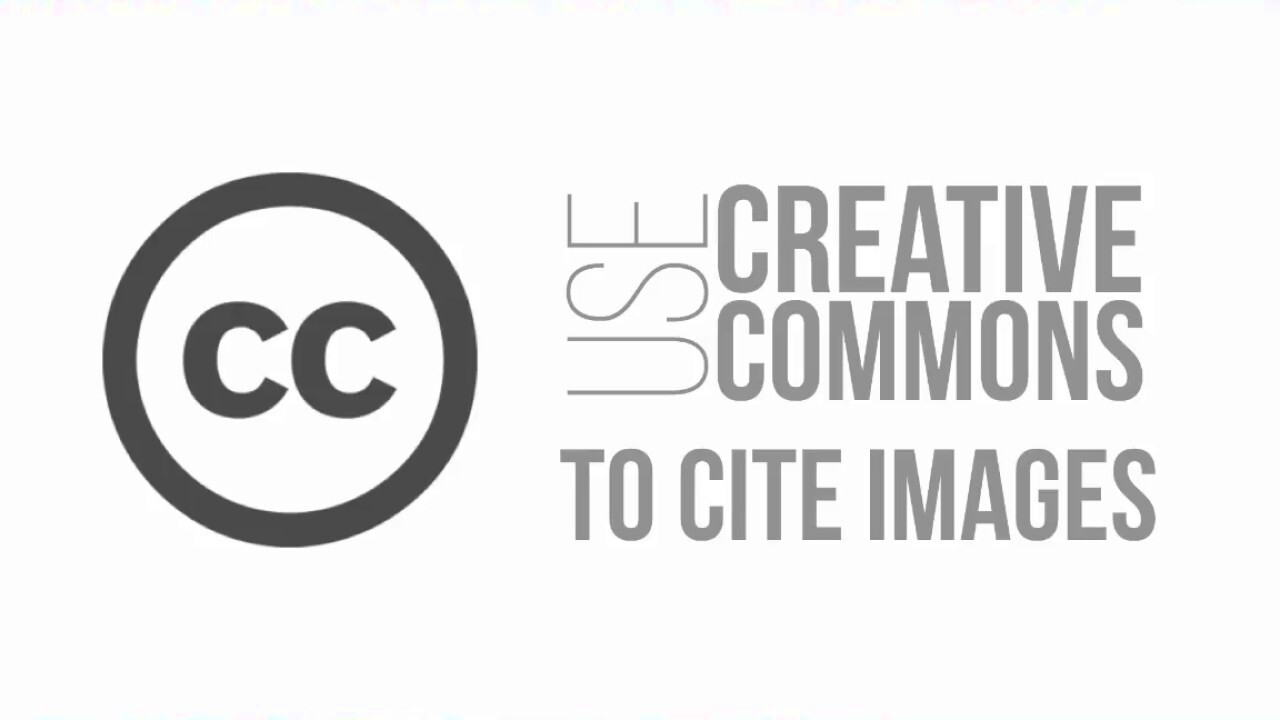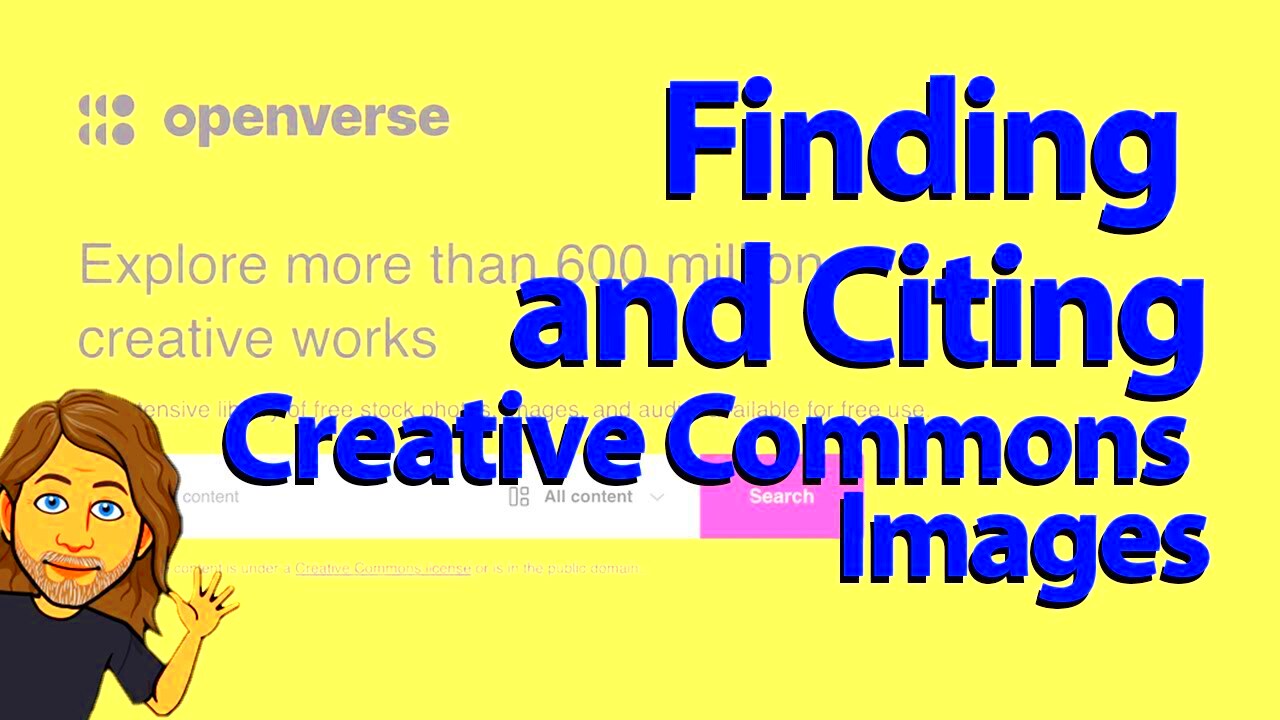Creative Commons licenses offer a way for creators to share their work with others while maintaining control over how it's used. These licenses are designed to make it easier to use, share, and remix content without the legal complexities of traditional copyright. Whether you're a photographer, artist, or writer, Creative Commons provides a clear set of guidelines for sharing your work with the world.
By using Creative Commons licenses, creators can decide how their images, videos, and other content are used by others, allowing for more freedom and collaboration. At the same time, it ensures that proper credit is given, and the work is not used in ways the creator doesn’t approve of. These licenses are widely used across different platforms, including photo-sharing sites, blogs, and educational resources.
Understanding the Types of Creative Commons Licenses

Creative Commons offers several types of licenses, each with different levels of permissions. It's important to understand the nuances of each license to ensure you're using content correctly. Here’s a breakdown of the most common types:
- Attribution (CC BY): This is the most open license, allowing others to distribute, remix, adapt, and build upon the work, even commercially, as long as they credit the original creator.
- Attribution-ShareAlike (CC BY-SA): This license allows others to remix, tweak, and build upon the work for commercial purposes, as long as they credit the creator and license their new creations under the same terms.
- Attribution-NoDerivs (CC BY-ND): Works with this license can be redistributed, but they cannot be modified. Credit must be given to the original creator.
- Attribution-NonCommercial (CC BY-NC): This license allows others to remix, tweak, and build upon the work, but not for commercial purposes. They must also credit the creator.
- Attribution-NonCommercial-ShareAlike (CC BY-NC-SA): Similar to the CC BY-NC license, but any new works created from it must be licensed under the same terms.
- Attribution-NonCommercial-NoDerivs (CC BY-NC-ND): This is the most restrictive Creative Commons license. It allows others to download and share the works, but they cannot alter the work in any way, nor use it commercially.
Understanding these licenses will help you navigate which content you can legally use and how to credit the creators properly.
Also Read This: Save Flickr Photos on iPhone Without App – Here’s How
Why Citing Creative Commons Images is Important

Citing Creative Commons images is crucial for both ethical and legal reasons. When you use an image under a Creative Commons license, proper attribution ensures that the original creator is given credit for their work. Here's why it matters:
- Respecting the Creator's Rights: By citing the image, you're respecting the creator’s intellectual property and their decision to share their work with specific conditions.
- Legally Protecting Yourself: Proper citation helps you stay within the bounds of the license. Not citing or using an image incorrectly can lead to legal issues, including copyright infringement claims.
- Building Trust and Credibility: When you credit the source of your images, it shows transparency and responsibility, which builds credibility with your audience.
- Encouraging Creative Sharing: Proper citation helps maintain the spirit of open sharing and collaboration, encouraging creators to continue offering their work for public use.
When citing Creative Commons images, it’s important to follow the exact terms of the license, such as including the creator’s name, a link to the license, and indicating if any modifications were made. This helps promote a fair and respectful digital ecosystem.
Also Read This: The Ultimate Guide on Accessing Your Old Flickr Account
How to Properly Cite Creative Commons Images

Properly citing Creative Commons images is essential to respecting the creator’s rights and following the terms of the license. While the exact format may vary depending on the source or platform, there are some key elements you should always include in your citation. Here’s a basic guide to follow:
- Creator's Name: Always credit the original creator of the image. This could be the artist, photographer, or other creator.
- Title of the Work: If the image has a title, include it. If not, use a brief description of the image.
- Source: Provide the URL or the platform where the image was found. This gives others access to the original image.
- License Type: Specify the type of Creative Commons license the image is under (e.g., CC BY, CC BY-NC, etc.). Be sure to link to the full text of the license.
- Indicate Modifications: If you modified the image in any way, you must indicate this in the citation (e.g., “cropped,” “color-adjusted,” etc.).
Here’s an example of a typical citation format:
Creator’s Name, "Image Title," Source, License Type, URL. Modifications: [if applicable].
For example:
John Doe, "Sunset over the Ocean," Unsplash, CC BY, https://unsplash.com/sunset-ocean. Modifications: Cropped for aspect ratio.
By following these steps, you ensure that you are complying with the terms of the license while also showing appreciation for the original creator’s work.
Also Read This: Getting Getty Images for Free Through Alternative Methods
Common Mistakes to Avoid When Citing Creative Commons Images
While citing Creative Commons images is important, there are a few common mistakes that people make. These errors can lead to legal trouble or simply diminish your credibility. Let’s go over some of the most frequent pitfalls and how to avoid them:
- Not Including a Citation at All: One of the biggest mistakes is failing to cite the image altogether. Even though Creative Commons allows free use, proper attribution is still required by law.
- Misunderstanding the License: Sometimes people use an image under one Creative Commons license and treat it like another. Always double-check the specific terms of the license to avoid misuse, such as using a non-commercial image for commercial purposes.
- Omitting Modifications: If you alter the image in any way (cropping, adjusting colors, etc.), you must indicate this in the citation. Failing to do so violates the terms of many licenses.
- Incorrect Citation Format: Ensure your citation includes all necessary elements (creator's name, title, license, etc.). Not following the standard format can result in incomplete attribution.
- Not Linking to the License: Many Creative Commons licenses require a link to the full text of the license. Skipping this step could be seen as non-compliance with the license terms.
By avoiding these mistakes, you ensure that you’re respecting both the rights of creators and the guidelines of Creative Commons licenses.
Also Read This: Creating Image URLs in Easy Steps
Tools and Resources for Finding Creative Commons Images
Finding Creative Commons images is easier than ever, thanks to various online platforms and tools that specifically offer images with open licenses. Whether you're a blogger, designer, or content creator, these resources help you discover high-quality images without violating copyright laws. Here are some of the best tools and websites to find Creative Commons images:
- Unsplash: A popular platform offering free high-resolution images that can be used for personal and commercial projects, with the requirement of attribution for the creator.
- Pexels: Provides high-quality, free images and videos under a Creative Commons Zero (CC0) license, which means no attribution is required.
- Flickr: A massive photo-sharing platform that allows users to filter images by their Creative Commons licenses, making it easier to find images that suit your needs.
- Pixabay: Like Pexels, Pixabay offers images and videos under a CC0 license, so you can use and modify the content without attribution.
- Wikimedia Commons: A huge database of free images, sounds, and videos. Each media file is available under a Creative Commons license, with clear attribution instructions.
- Flaticon: This is a great resource for finding vector icons and illustrations that are available under Creative Commons licenses, which you can use for web design, presentations, and more.
In addition to these platforms, several browser extensions and tools can help you find Creative Commons images while browsing the web, such as the "CC Search" extension by Creative Commons. These tools make it easy to access and use legally compliant images for your projects.
By using these resources, you can find and use Creative Commons images confidently, knowing you're following the correct attribution guidelines and staying within the terms of the license.
Also Read This: How to Download Images from iStock for Free Exploring Legal and Ethical Options
Benefits of Using Creative Commons Images for Your Projects
Using Creative Commons images offers several advantages, whether you are creating content for your blog, website, or social media. These images are free to use under specific conditions, and they provide a simple, legal way to enhance your projects. Let’s look at some key benefits:
- Cost-Effective: Creative Commons images are often free to use, allowing you to save on the costs of purchasing stock photos or hiring a photographer.
- Wide Variety of Content: You can find Creative Commons images across a wide range of subjects, from nature and landscapes to business and technology, which means you’re likely to find the perfect image for your project.
- Legal Assurance: By adhering to the terms of the Creative Commons license, you avoid the risk of copyright infringement and legal complications that could arise from using unlicensed images.
- Creative Freedom: Many Creative Commons licenses allow you to modify, remix, and adapt images for your own use, giving you greater creative freedom without the need to request permission from the creator.
- Supports Open Culture: By using Creative Commons images, you’re contributing to an open, collaborative online environment that allows creators to share and access content freely.
In short, Creative Commons images make it easier and more affordable to access high-quality visual content while ensuring that you stay on the right side of copyright law. It’s a win-win for both creators and users.
Also Read This: Confirmation Queries: How Do I Confirm on Photobucket
How Flaticon Downloader Helps with Creative Commons Images
Flaticon Downloader is a powerful tool that simplifies the process of downloading and using Creative Commons images, specifically vector icons and illustrations. Here’s how it can be beneficial for your projects:
- Easy Access to Free Icons: Flaticon offers a massive collection of vector icons and illustrations that are free to use under a Creative Commons license, making it easy to find icons for your website, app, or presentation.
- Flexible License Options: With Flaticon Downloader, you can access icons under various Creative Commons licenses (such as CC BY), which allow you to use, modify, and distribute the icons as long as you credit the original creator.
- Time-Saving: Instead of manually searching for individual icons, Flaticon’s downloader lets you quickly download packs of icons with just a few clicks. This helps you save time when you're working on a design project or website.
- High-Quality Icons: Flaticon offers a vast collection of high-quality, professionally designed icons in various formats (SVG, PNG, EPS), making it easy to integrate them into your design work without compromising on quality.
- Filter by License: Flaticon Downloader allows you to filter icons by their licensing terms, so you can ensure that you're only downloading and using images with the appropriate Creative Commons licenses for your project.
Whether you're a designer or a content creator, Flaticon Downloader streamlines the process of accessing Creative Commons images, providing you with a rich library of icons that are easy to use and share.
Also Read This: Flickr Video Download in Less Than a Minute – Learn Now
FAQ
1. What is a Creative Commons license?
A Creative Commons license is a public copyright license that allows creators to share their work while setting specific terms for how others can use it. There are several types of licenses, each offering different levels of permission.
2. Can I use Creative Commons images for commercial purposes?
It depends on the license. Some Creative Commons licenses (like CC BY) allow commercial use, while others (like CC BY-NC) only allow non-commercial use. Always check the specific terms of the license before using the image commercially.
3. Do I need to pay for Creative Commons images?
No, most Creative Commons images are free to use. However, some may require attribution, and certain licenses may restrict modifications or commercial use. Always verify the terms of the license before using the image.
4. What happens if I don’t properly cite Creative Commons images?
Not properly citing Creative Commons images can result in legal consequences, including copyright infringement. It’s important to follow the attribution guidelines specified by the license to avoid these issues.
5. Can I modify Creative Commons images?
Many Creative Commons licenses allow modifications, but some (like CC BY-ND) do not. Make sure to check the license terms to ensure you’re following the rules for modifying the image.
6. How do I find Creative Commons images?
You can find Creative Commons images on platforms like Unsplash, Pexels, Wikimedia Commons, and Flaticon. These sites allow you to filter content by license type, making it easy to find images that fit your needs.
Conclusion
Using Creative Commons images is a fantastic way to access high-quality, legally compliant visual content for your projects. By understanding how to properly cite these images and following the terms of the license, you can ensure that you are respecting the creator's rights while avoiding legal complications. Platforms like Flaticon Downloader make it even easier to find and use Creative Commons images, offering a vast collection of icons and illustrations that can be customized for any project. Whether you are designing a website, creating content for social media, or working on a blog post, Creative Commons images provide a wealth of opportunities for creativity and collaboration. Remember to always check the license terms and give proper attribution when necessary, ensuring that you remain compliant with the guidelines and help foster a community of open sharing and respect among creators. With the right tools and knowledge, Creative Commons images can be a valuable resource for your creative endeavors.

 admin
admin








